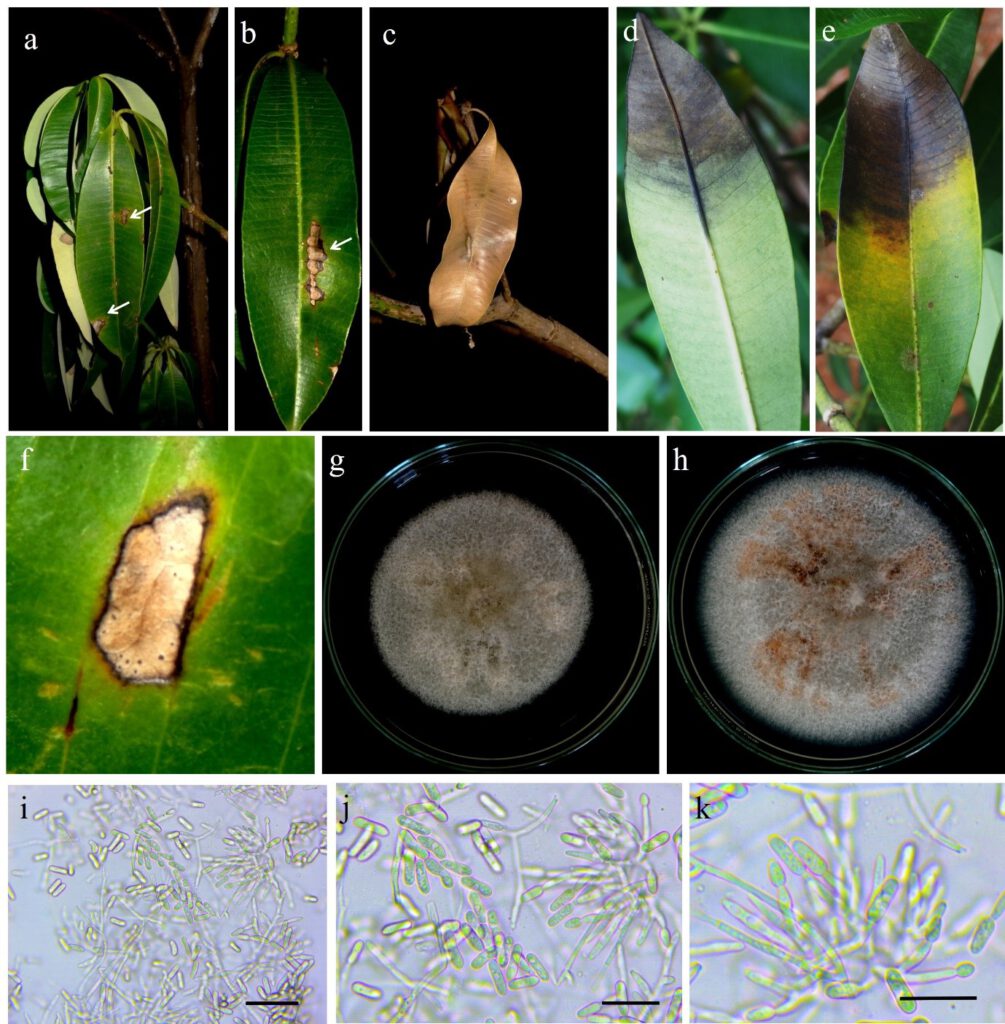Colletotrichum siamense Prihast., L. Cai & K.D. Hyde, in Prihastuti, Cai, Chen, McKenzie & Hyde, Fungal Diversity 39: 98 (2009)
MycoBank number: MB 515410; Index Fungorum number: IF 515410; Facesoffungi number: FoF 03599;
Pathogenic on Alstonia scholaris. Sexual morph: Undetermined. Asexual morph: Conidiomata black, acervulus, circular to oval, submerged, solitary or aggregated, conidiophores formed on a cushion brown coloured cells. Conidiophores hyaline to pale brown, septate, branched. Conidiogenous cells phialidic, hyaline to pale brown, cylindrical to ovoid, … Conidia hyaline, aseptate, smooth walled, cylindrical, guttulate, with obtuse rounded ends rarely oblong, 6.5 – 17 – 3 –4.3 µm (= 11.24 ± 1.62 — 3.27 ± 0.32, n = 30).
Cultural characteristics: Colonies on PDA at first appeared white and later turned to pale brown to pink, reverse pale yellow to pink colonies, after seven days reached 78 mm diam. at room temp. Aerial mycelia greyish-white, dense, cottony, with visible conidial masses at the inoculum point. Acervuli brown to dark brown, conspicuous for their brown setae.
Materials Examined: India, Karnataka, Mysuru on infected shoots and leaves of Alstonia scholaris (Apocyanaceae) as pathogen
GenBank numbers: ITS = OM912803, OM912804; GAPDH = OM934812, OM934813; TUB2 = OM934814, OM934815
Notes: Colletotrichum siamense has been reported as pathogen on a wide range of host plants. A total of 387 host records are available for C. siamense (including the synonyms mentioned above) in USDA fungal database. Among the 387, 39 records are reported from India. The common and agriculturally important host plants recorded are Gossypium hirsutum, Mangifera indica, Psidium guajava, Saraca indica and others. However, this report forms new record for C. siamense on Alstonia scholaris from India.

Figure legend: a-b leaf blight/early symptoms of anthracnose disease; c – complete death of infected branch due to anthracnose disease; d-e anthracnose symptoms appearing at the tip of the leaves caused necrosis; f a close view of anthracnose symptoms; g – pure cultures of Colletotrichum siamense; i-k conidiogenous cells and conidia of C. siamense observed under compound microscope.
